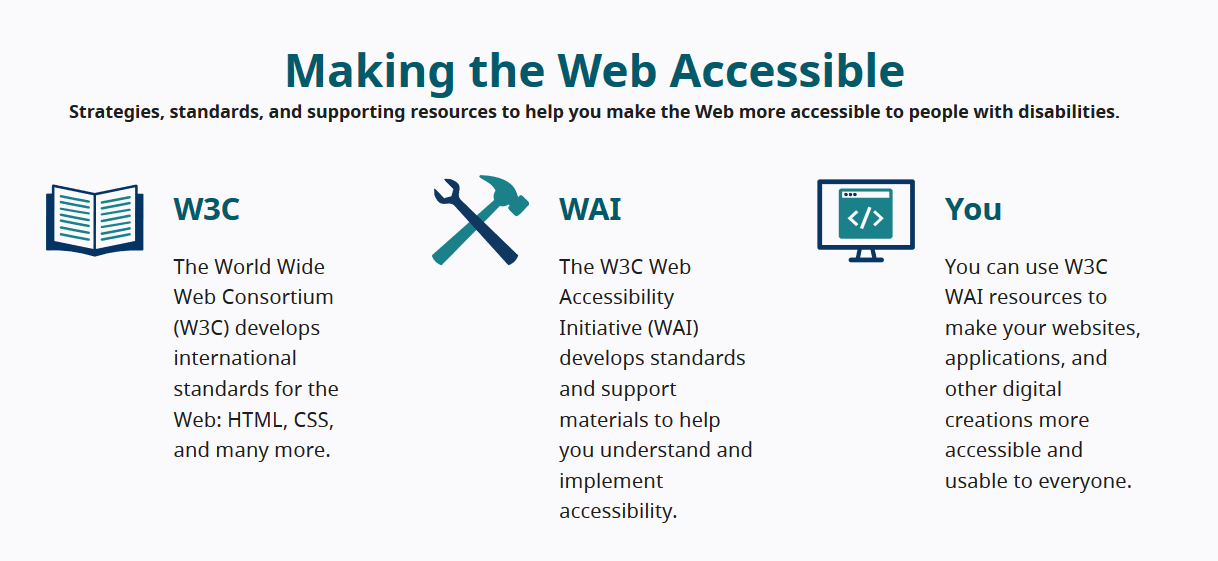News
W3C WAI Website and Resources Redesigned
11 May 2018 | Archive
 The redesigned W3C WAI website makes it easier to get information to help you improve web accessibility. The visual design, information architecture, navigation, and overall user experience is all new. Much of the content is revised, and we plan to revise more in the coming months. The redesign makes it easier to skim pages, read content, find specific information, and discover new resources. It’s also easier for the community to be involved in improving resources. Please see W3C WAI Website Redesign Information for:
The redesigned W3C WAI website makes it easier to get information to help you improve web accessibility. The visual design, information architecture, navigation, and overall user experience is all new. Much of the content is revised, and we plan to revise more in the coming months. The redesign makes it easier to skim pages, read content, find specific information, and discover new resources. It’s also easier for the community to be involved in improving resources. Please see W3C WAI Website Redesign Information for:
- Planned Changes and Known Issues
- Acknowledgements
- How to comment
W3C Invites Implementations of WebVTT: The Web Video Text Tracks Format
11 May 2018 | Archive
The Timed Text Working Group invites implementations of WebVTT: The Web Video Text Tracks Format Candidate Recommendation. This specification defines WebVTT, the Web Video Text Tracks format. Its main use is for marking up external text track resources in connection with the HTML element. WebVTT files provide captions or subtitles for video content, and also text video descriptions [MAUR], chapters for content navigation, and more generally any form of metadata that is time-aligned with audio or video content.
This specification is based on the Draft Community Group Report of the Web Media Text Tracks Community Group.
W3C Invites Implementations of Pointer Events – Level 2
11 May 2018 | Archive
The Pointer Events Working Group invites implementations of Pointer Events – Level 2 Candidate Recommendation. The features in this specification extend or modify those found in Pointer Events, a W3C Recommendation that describes events and related interfaces for handling hardware agnostic pointer input from devices including a mouse, pen, touchscreen, etc. For compatibility with existing mouse based content, this specification also describes a mapping to fire Mouse Events for other pointer device types.
First Public Working Draft: Data Catalog Vocabulary (DCAT) – revised edition
9 May 2018 | Archive
The Dataset Exchange Working Group has published a First Public Working Draft of Data Catalog Vocabulary (DCAT) – revised edition. DCAT is an RDF vocabulary designed to facilitate interoperability between data catalogs published on the Web. This document defines the schema and provides examples for its use. By using DCAT to describe datasets in data catalogs, publishers are using a standard model and vocabulary that facilitates the consumption and aggregation of metadata from multiple catalogs, and in doing so can increase the discoverability of datasets. It also makes it possible to have a decentralized approach to publishing data catalogs and makes federated search for datasets across catalogs in multiple sites possible using the same query mechanism and structure. Aggregated DCAT metadata can serve as a manifest file as part of the digital preservation process.
